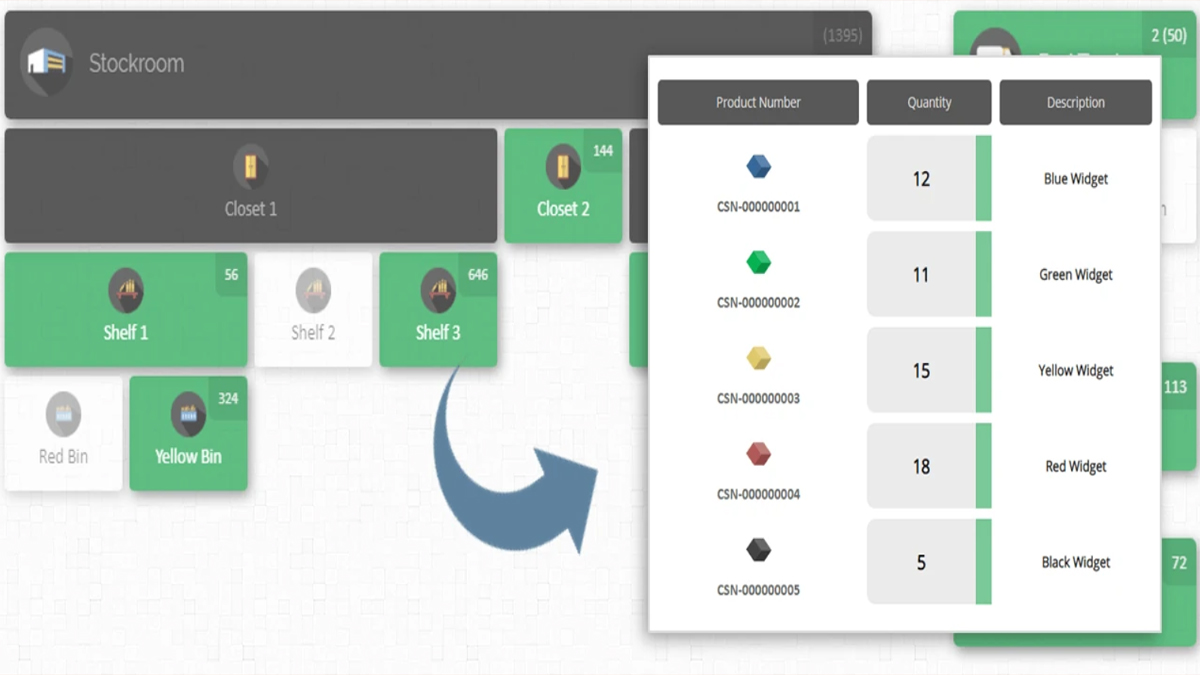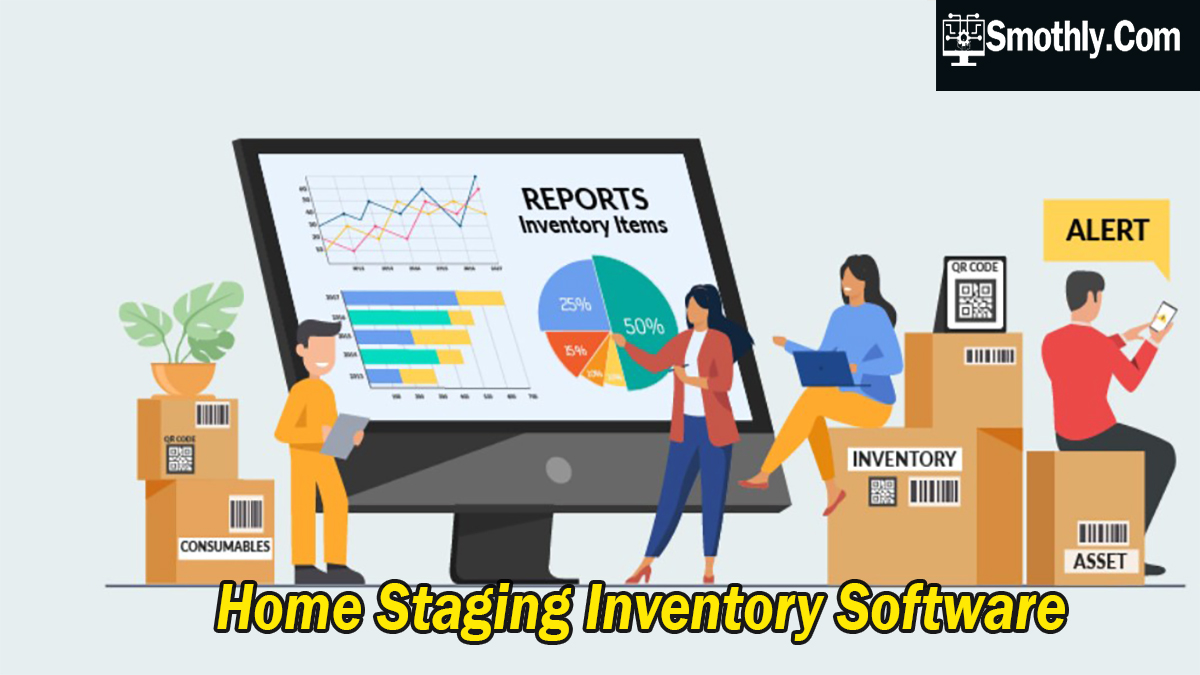Home staging inventory software revolutionises the real estate industry by simplifying the management of staging items like furniture and decor. This software streamlines inventory tracking, scheduling, and client communication, making the staging process more efficient and effective. By automating tasks and improving organisation, staging professionals can enhance their operations, reduce errors, and ultimately boost client satisfaction.
Why Use Home Staging Inventory Software
Using home staging inventory software offers several benefits.These are given below:
- Accurate Inventory Management: Maintain precise records to avoid overbooking or missing items.
- Time-Saving Automation: Automate scheduling for pickups and deliveries.
- Improved Organization: Streamline the management of furniture, decor, and other staging items.
- Enhanced Client Communication: Facilitate better communication with clients through integrated tools.
- Increased Efficiency: Reduce manual tasks and errors, leading to smoother operations.
Top Home Staging Inventory Software Details
When choosing the best home staging inventory software, consider the following options known for their features, ease of use, and customer support:
- StageForce:
- Comprehensive inventory tracking
- Scheduling and logistics management
- Client and project management tools
- User-friendly interface
- Stager:
- Cloud-based platform
- Real-time inventory updates
- Detailed reporting and analytics
- Integration with other real estate tools
- InventoryLab:
- Robust inventory management
- Barcode scanning and tracking
- Customizable reports
- Mobile app for on-the-go access
- EZhome Inventory:
- Simple and intuitive design
- Automated scheduling and reminders
- Client communication features
- Affordable pricing plans
- Design Manager:
- Advanced inventory control
- Financial management and invoicing
- Project management capabilities
- Strong customer support
Free Home Staging Inventory Software Pricing Packages
Many home staging software providers offer various pricing packages, including free options with basic features and premium plans with advanced functionalities. It’s essential to evaluate your specific needs and budget before selecting a package that suits your requirements.
| Software | Features | Limitations | Advantages |
| StageForce Free | Basic inventory tracking, limited scheduling, client management | limited to a specific quantity of products and clients, among them no advance reporting | Beginners or small setup businesses |
| Stager Basic | Cloud-based, real-time inventory updates, basic project management | Limited to one user, minimal customer support, fewer integrations | Individual stagers or small teams |
| EZhome Inventory Lite | Simple inventory management, automated reminders, basic client communication | Limited storage, fewer customization options, no advanced analytics | Home stagers on a tight budget |
| Design Manager Free | Inventory control, basic financial management, simple project tracking | Limited to minimum requirements and a small number of projects | New businesses needing simple solutions |
| InventoryLab Basic | Barcode scanning, basic reports, mobile app access | Limited reporting, single-user access, minimal support | Solo entrepreneurs or very small teams |
Home Staging Inventory Software Free Download in 2024
In 2024, downloading home staging software is straightforwardDownloading home staging software in 2024 is a straightforward process. Follow these steps to get started:
-
- Identify Your Needs
- Determine the specific features you need, such as inventory tracking, client management, scheduling, etc.
- Assess your budget and decide if you want to start with a free version or explore premium options.
- Research Software Options
- Look for reputable home staging software providers.
- Read user reviews and ratings to understand the pros and cons of each software.
- Visit the Software Provider’s Website
- Go to the official website of the software you have chosen.
- Ensure the website is secure (look for “https” and a padlock symbol in the address bar).
- Navigate to the Download Section
- Locate the download or “Get Started” section on the website.
- This is often found on the homepage or under a “Products” or “Solutions” menu.
- Choose the Free Version
- Select the free version or trial option if available.
- Some websites might ask you to register an account prior to allowing downloads.
- Create an Account (If Required)
- Fill in the necessary details to create a free account.
- Verify your email address if prompted.
- Download the Software
- Click the download button for the appropriate version (Windows, Mac, or mobile).
- Save the installer file to your computer.
- Install the Software
- Locate the downloaded file in your downloads folder.
- Double-click the installer file to begin the installation process.
- Follow the on-screen instructions to complete the installation.
- Identify Your Needs

How to Implement Home Staging Inventory Software
Implementing home staging inventory software involves several steps.
- Choose the Right Software: Select a software that meets your business needs and budget.
- Plan the Implementation: Create a detailed implementation plan with timelines and responsibilities.
- Data Migration (if needed): Transfer existing inventory and client data to the new software.
- Install and Configure: Download and install the software, configure settings and user permissions.
- Training: Provide training to users on how to use the software effectively.
- Integration: Integrate the software with other tools used in your business.
- Customization: Customise the software settings to fit your business processes.
- Testing: Conduct thorough testing to ensure the software works as expected.
- Launch: Roll out the software for full use in your staging operations.
- Monitor and Support: Monitor usage, gather feedback, and provide ongoing support to users.
Tips for Optimising the Use of Your Home Staging Inventory Software
By implementing these tips, you can enhance the efficiency, accuracy, and overall effectiveness of your home staging inventory management processes.
- Regular Updates: Keep your inventory database current by regularly updating item availability, quantities, and status. This ensures accurate information for scheduling and client communication.
- Utilise Automation: Take advantage of automation features within the software to streamline repetitive tasks such as scheduling pickups, generating reports, and sending notifications. This saves time and reduces manual errors.
- Customise Settings: Tailor the software settings to fit your specific business needs and workflows. Customise fields, templates, and notifications to optimise how information is managed and communicated.
- Integrate with Other Tools: Integrate the inventory software with other tools used in your staging business, such as CRM systems or accounting software. This allows for seamless data flow and enhances overall operational efficiency.
- Train Your Team: Provide comprehensive training to your team on using the software effectively. Ensure they understand how to input data, utilise features like barcode scanning or scheduling, and leverage reporting capabilities to maximise productivity.
Conclusion
Home staging inventory software is essential for staging professionals looking to streamline operations and enhance client satisfaction. By leveraging the right software tools, you can effectively manage inventory, schedule tasks, and improve overall efficiency in the staging process. Whether you’re considering free options or evaluating premium software, selecting the right tool can make a significant difference in your business success. Read more.
FAQs About Home Staging Inventory Software
Effective inventory management can significantly improve efficiency and reduce costs for staging professionals. It ensures that the right items are available when needed, enhancing client satisfaction and profitability.
The best inventory management system depends on your specific needs and industry. For home staging, software that offers robust inventory tracking, scheduling capabilities, and client management features is often considered ideal.
In Excel, the basic inventory formula involves subtracting the number of items sold from the initial inventory quantity to determine the current stock level.
To effectively keep track of staging inventory, use software that allows you to categorise items, track their location, schedule pickups and deliveries, and generate reports on inventory usage and availability.





